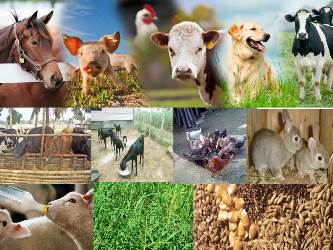



Received: 01-Jul-2022, Manuscript No. GJASLPAB-22-73861 ; Editor assigned: 04-Jul-2022, Pre QC No. GJASLPAB-22-73861 (PQ); Reviewed: 21-Jul-2022, QC No. GJASLPAB-22-73861 ; Revised: 29-Jul-2022, Manuscript No. GJASLPAB-22-73861 (R); Published: 05-Aug-2022, DOI: 10.35841/2408-5499.22.10.172
Anthrax
Bacillus anthracis is a moderately big spore-forming rectangle bacterium that causes anthrax, a highly contagious and lethal illness of cattle. Ruminants that are exposed to anthrax die suddenly. Extremely powerful poisons that are produced by the bacteria are what cause the negative consequences and high mortality rate. Symptoms of the sickness typically show up 3 to 7 days after ingesting or inhaling the spores. Animals typically die within two days after showing symptoms.
The primary animals afflicted by this disease are those with hooves, such as deer, cattle, goats, and sheep. They typically contract the illness by ingesting anthrax spores while grazing on pasture that has been polluted (become impure) with the disease-causing agent. The odourless, colourless, and tasteless spores can infect both people and animals when inhaled (breathed in).
Foot and mouth disease
Cloven-footed animals are vulnerable to the highly contagious foot-and-mouth disease. Fever, the development of vesicles and blisters, as well as lesions on the skin between the toes and above the hooves and in the mouth, udder, and teats, are the main symptoms. Animals that have recovered from the disease exhibit the disease's recognisable rough coat and hoof deformity.
Rabies
Dogs, foxes, wolves, hyaenas, and in some areas, bats that feed on blood, are all susceptible to the sickness known as rabies. If a person or animal is bitten by a rabid animal, the disease is transmitted. The rabies-causing bacteria are present in the sick (rabid) animal's saliva.
Although rabies is a fatal disease, not all dogs that bite get bitten by it.
The germs that live in the saliva of the rabid animal enter the body through the bite wound when it bites another animal or person. To reach the brain, the germs move along the nerves. It can take between two and ten weeks or longer from the moment of the bite to the first indications that the affected person or animal has been ill. The length of time depends on how close to the brain the bite was. The bitten animal or person will exhibit symptoms right away if the bite was to the face or head, but it will take much longer if the bite was to the leg for symptoms to appear.
Blue tongue
Sheep are particularly adversely impacted by bluetongue, a disease that affects domestic and wild ruminants as well as camels and is spread by midges. Despite being infected more frequently than sheep, cattle not always exhibit illness symptoms. Animals can contract viruses from one another through midges of the Cullicoides genus. It may be possible for unsanitary activities (the use of contaminated surgical instruments or hypodermic needles) to cause mechanical transmission across herds and flocks, or even inside a herd or flock.
Tetanus
Both animals and humans can contract this infectious, non-febrile sickness, which is marked by spasmodic tetany and hyperaesthesia. The globe is plagued by this illness. By contaminating wounds, infection occurs. The spores can grow, reproduce, and form a poison that is then absorbed by the animal body when they are in deep pierced wounds. The microorganism enters the wound by a piercing item and is found in dirt and animal faeces. The bacteria live in the intestine of healthy animals, but under under some unspecified circumstances it multiplies quickly and generates enough poison to cause sickness.
Incubation lasts between one and two weeks on average, but it can last as little as three days. Tetanus is a disease that affects many species of domesticated animals, but it is most common in horses and lambs. Adult sheep, goats, cattle, pigs, dogs, and cats also get tetanus occasionally. Mild stiffness and a hesitation to move any of the animals are the earliest signs. After 12 to 24 hours, more acute symptoms including stiff limbs, a stiff neck, a stiff head, a stiff tail, and muscle twitching appear. Spasms start when there is noise. Ears are erect, nostrils are dilated, and the nictitating membrane protrudes in the terminal phases. Because the mouth cannot be opened, mastication becomes very difficult, hence the name lockjaw.